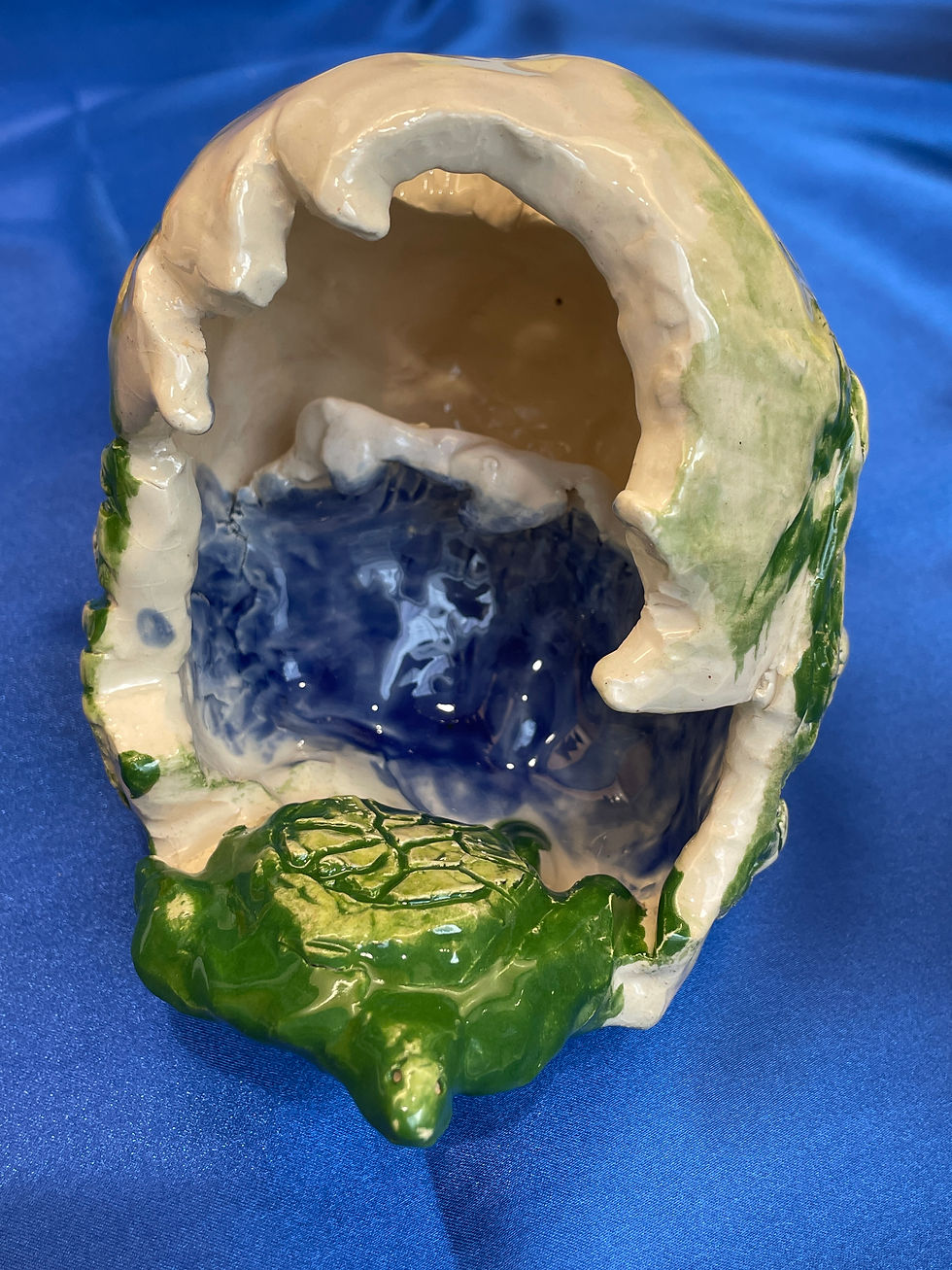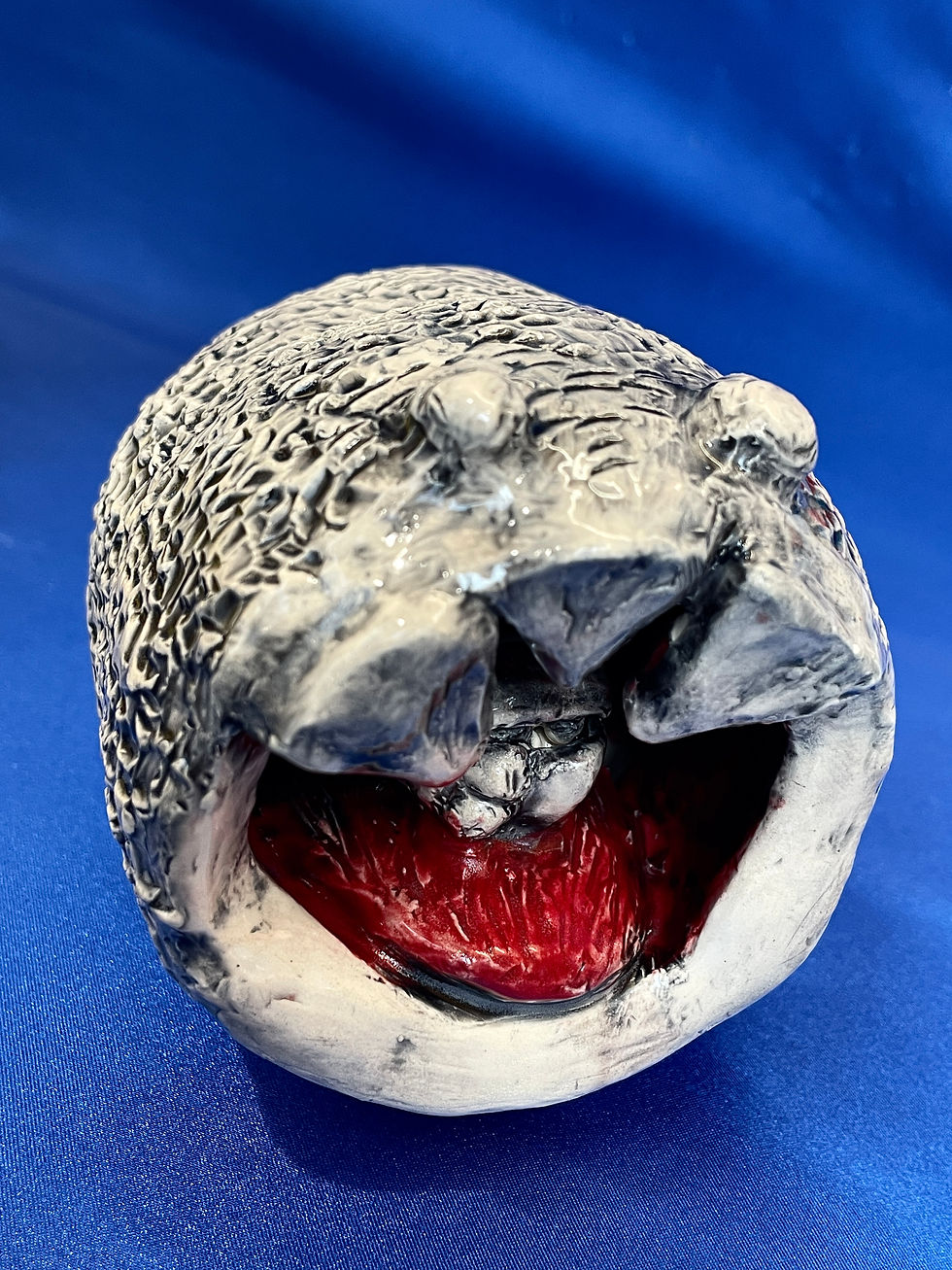Sculpting Miniature Dioramas
- Ashley Jager
- Jun 1, 2023
- 3 min read

Cover Image titled "Woodland Creatures," by 9th Grade Student
Imagination runs wild while storytelling on a miniature scale! The Art I students hand-built narrative dioramas, each sculpted from a ball of clay.

This unit was a good introduction to handbuilding techniques and Ceramics fundamentals while still offering a lot of opportunities for personal creativity. Students began at the drawing board drafting their diorama scenes. They had to include 3D details, surface texture, and incorporate a narrative or theme into their sculpture.


Students learned how to create a sphere using the double pinch pot method through guided demonstrations. These hollow balls of clay were then manipulated into various forms depending on the overall shape of their concepts.
They added structures to their double pinch pots when necessary to more accurately build their sculptures. For example, this fish was created with two additional sections that were slip and scored to attach to the original sphere. This created a hollow sculpture from mouth to tail that would prevent an explosion in the kiln.

Some students kept their sculptures rounded...

...and others shaped the clay to become more oval, elongated, or dome-like
Once the overall form was constructed, the students focused on sculpting 3-D details with attached pieces of clay and creating their miniature scenes.
This was a crucial part of the process for students to visually represent the theme of their dioramas.
I even had a student stretch the project expectations by including slab-building in the design to incorporate a more angular structure that couldn't be formed with the pinch method.

Students were required to use surface texture in some part of their sculpture for areas that would pull in glaze with the resist inlay method. This would layer color in all of the textured grooves while maintaining a different color for the rest of the ceramic work.

My students loved the creative freedom to build their one-of-a-kind diorama sculptures!

GLAZING!

Once the sculptures were bisque fired, the students used a resist technique by brushing on the glaze and then wiping back the surface to reveal the color embedded in the grooves. They could use more than one color for the surface as long as they demonstrated this technique with their surface texture. This glaze method emphasized the details they had carved into their sculptures.

After wiping back the surface, we waxed the bottom of the pieces and each student dunked their sculpture into the clear glaze to completely coat the surface with a shiny layer of glass. While the surface looks green, it fires clear in the kiln.
This took steady heads to firmly hold the piece with tongs and not drop it! (I think this might have been one of their favorite parts of the process).

With great anticipation, we fired the glazed pieces and displayed the work in the gallery. The glazed surface texture showcases the amount of detail that went into these handbuilt works of art!

"Makin' a Splash!" by 10th Grade Student representing a baby sea turtle with its mama inside a coconut

"Theia" by 10th Grade Student representing the core of good and evil inside the inner soul of an eye

"Finn and Jake" by 11th Grade Student inspired by Adventure Time

"Unleashed!" by 9th Grade Student featuring a sea turtle splashing onto the sand from a wave

"Shrek" by 10th Grade Student

"Rainmaker" by 10th Grade Student
"Surf and Sand" by 9th Grade Student
"The King Has Come" by 10th Grade Student inspired by the nativity scene

"Midnight" by 10th Grade Student, inspired by the solar system

"Hidden Treasure" by 11th Grade Student
The narrative dioramas gave students an opportunity to improve hand-building skills while tackling new challenges with clay construction and thematic development. The artistic process allowed students to create independent ideas while still learning the standard fundamentals. The variety of work displayed demonstrates just how much my students continue to improve with their experiences in Ceramics!

Close-up of the miniature porcupine featured in the "Woodland Creatures" sculpture by 9th Grade Student







































Comments